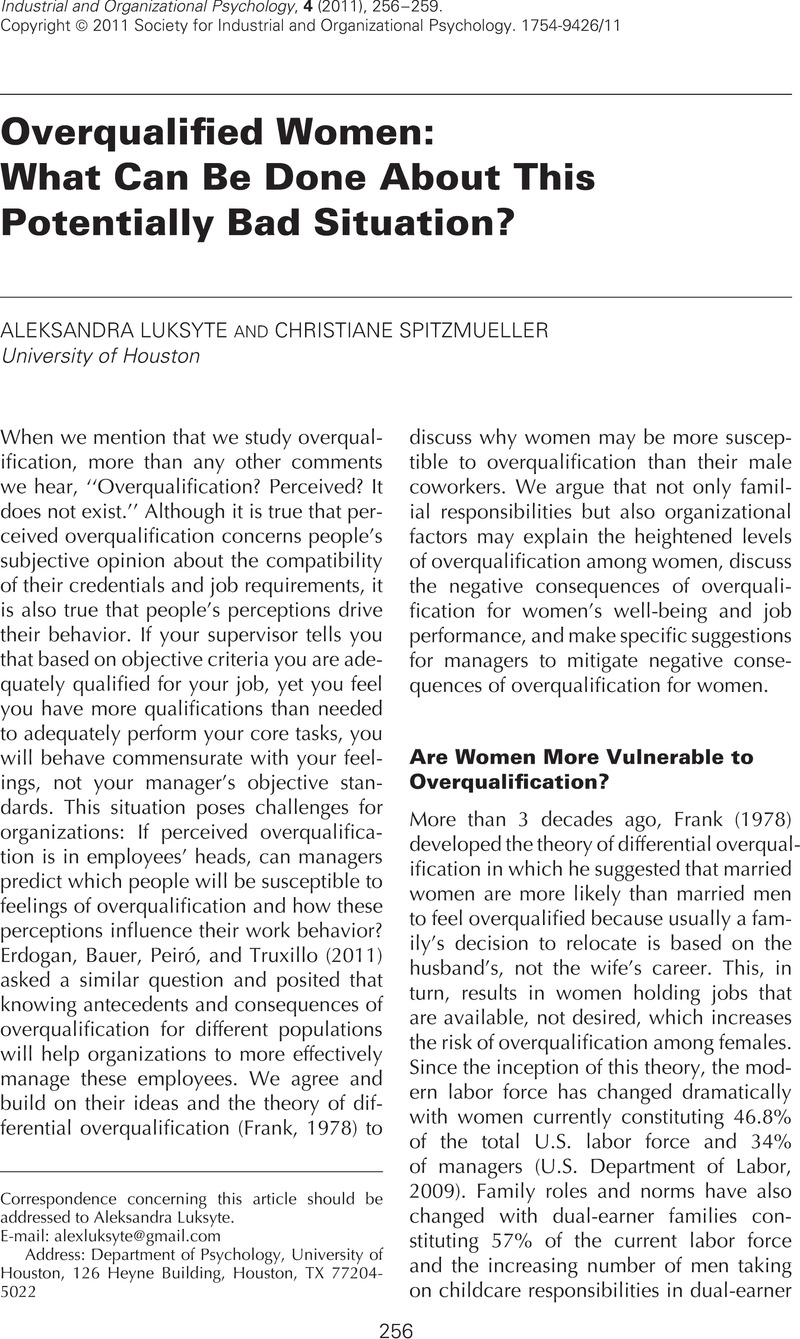Crossref Citations
This article has been cited by the following publications. This list is generated based on data provided by Crossref.
Erdogan, Berrin
Bauer, Talya N.
Peiró, José María
and
Truxillo, Donald M.
2011.
Overqualification Theory, Research, and Practice: Things That Matter.
Industrial and Organizational Psychology,
Vol. 4,
Issue. 2,
p.
260.
Liu, Songqi
and
Wang, Mo
2012.
The Role of the Economic Crisis on Occupational Stress and Well Being.
Vol. 10,
Issue. ,
p.
1.
Alfes, Kerstin
2013.
Perceived Overqualification and Performance. The Role of the Peer-Group.
German Journal of Human Resource Management: Zeitschrift für Personalforschung,
Vol. 27,
Issue. 4,
p.
314.
G. Martinez, Patricia
L. Lengnick-Hall, Mark
and
Kulkarni, Mukta
2014.
Overqualified? A conceptual model of managers’ perceptions of overqualification in selection decisions.
Personnel Review,
Vol. 43,
Issue. 6,
p.
957.
Kulkarni, Mukta
Lengnick-Hall, Mark L.
and
Martinez, Patricia G.
2015.
Overqualification, mismatched qualification, and hiring decisions.
Personnel Review,
Vol. 44,
Issue. 4,
p.
529.
Lin, Bilian
Law, Kenneth S.
and
Zhou, Jing
2017.
Why is Underemployment Related to Creativity and OCB? A Task-Crafting Explanation of the Curvilinear Moderated Relations.
Academy of Management Journal,
Vol. 60,
Issue. 1,
p.
156.
ÖZKANAN, Arzu
2018.
ALGILANAN AŞIRI NİTELİKLİLİĞE İKİ YÖNLÜ BAKIŞ: ÇALIŞAN – AMİR DEĞERLENDİRMESİ.
Finans Ekonomi ve Sosyal Araştırmalar Dergisi,
Vol. 3,
Issue. 4,
p.
664.
Shin, Dong-Hoon
and
Bills, David
2021.
Trends in Educational and Skill Mismatch in the United States.
Social Sciences,
Vol. 10,
Issue. 10,
p.
395.
ŞEN, Aynur
and
NEMLİ ÇALIŞKAN, Esra
2022.
Algılanan Aşırı Nitelikliliğin Yapıcı Rol Dışı İş Yeri Davranışları Üzerindeki Etkisinde Girişimcilik Yöneliminin Düzenleyici Rolü.
Management and Political Sciences Review,
Vol. 4,
Issue. 2,
p.
86.
GÜZEL, Şerife
and
SIĞIRCI, Hamza
2022.
Algılanan Aşırı Nitelikliliğin İş Doyumu ve Örgütsel Özdeşleşme ile İlişkisi: Doktor ve Hemşireler Üzerine Bir Araştırma.
Süleyman Demirel Üniversitesi Vizyoner Dergisi,
Vol. 13,
Issue. 35,
p.
756.
Wiegand, Justin P.
2023.
When overqualification turns dark: A moderated-mediation model of perceived overqualification, narcissism, frustration, and counterproductive work behavior.
Personality and Individual Differences,
Vol. 214,
Issue. ,
p.
112351.





